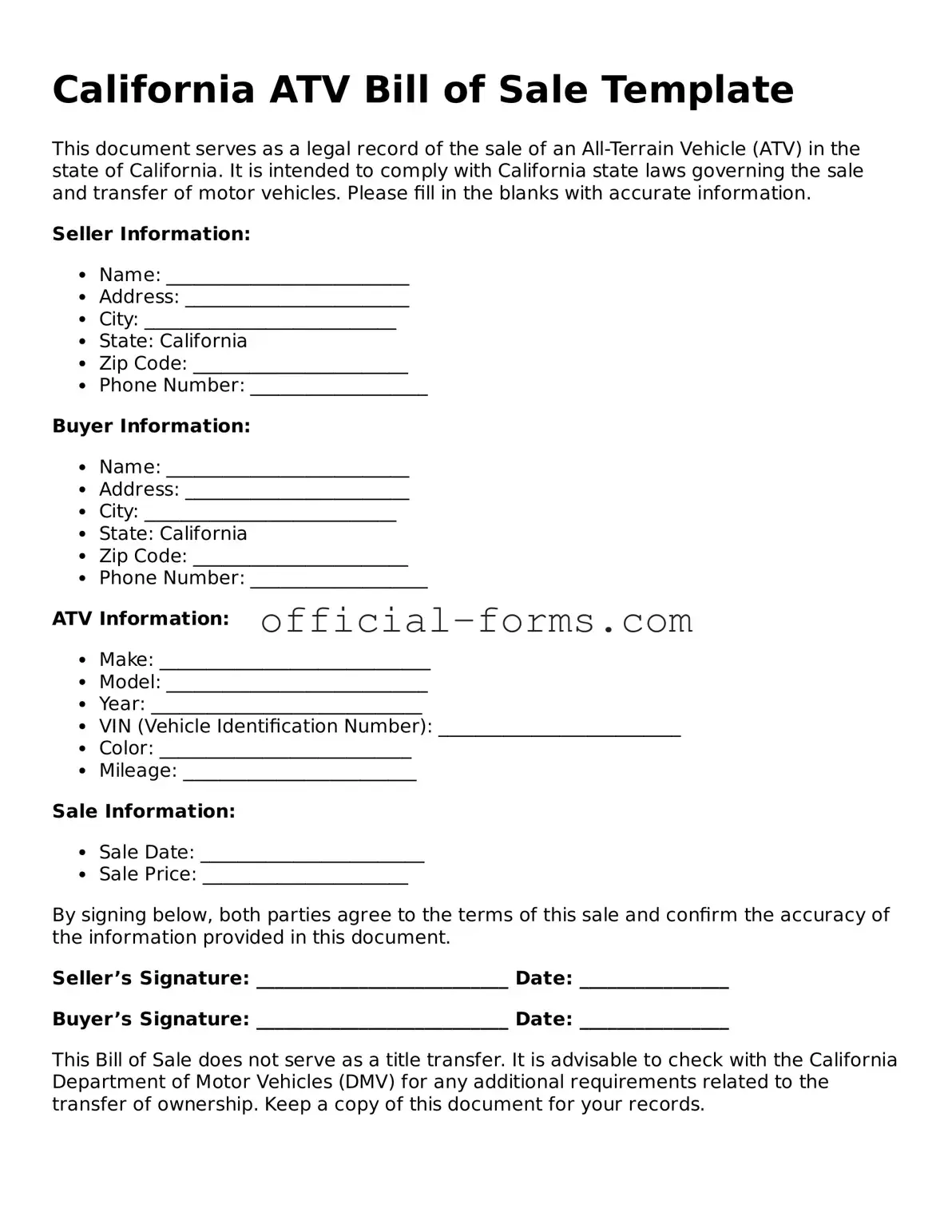Filling out the California ATV Bill of Sale form can seem straightforward, but many people make common mistakes that can lead to complications later on. Understanding these pitfalls can help ensure a smooth transaction and protect both the buyer and the seller.
One frequent error is failing to provide complete and accurate information about the ATV. This includes details such as the Vehicle Identification Number (VIN), make, model, and year. Omitting any of this crucial information can create confusion and may complicate the registration process for the new owner.
Another mistake involves not including the purchase price. It is important to clearly state the amount for which the ATV is being sold. This information is not only vital for record-keeping but also necessary for tax purposes. If the purchase price is left blank or inaccurately reported, it could lead to issues with the California Department of Motor Vehicles (DMV).
Additionally, some individuals forget to sign the form. Both the seller and the buyer must provide their signatures to validate the transaction. Without these signatures, the document may be considered incomplete, which can hinder the transfer of ownership.
People often overlook the date of the transaction as well. Including the date is essential because it establishes when the sale occurred. This date can be important for both parties, particularly if there are any disputes or questions about the timing of the sale.
Not keeping a copy of the completed Bill of Sale is another common oversight. After the form is filled out and signed, it’s wise for both parties to retain a copy for their records. This document serves as proof of the transaction and can be helpful in case of any future issues.
Some sellers may also neglect to disclose any known issues with the ATV. Transparency is key in any sale. If the seller is aware of mechanical problems or other defects, these should be clearly communicated to the buyer. Failing to do so can lead to legal disputes down the road.
Lastly, individuals sometimes forget to check for any additional requirements specific to their county or city. While the state provides a general Bill of Sale form, local regulations may impose additional requirements. It is important to research these local rules to ensure compliance.
By being aware of these common mistakes, both buyers and sellers can navigate the ATV sale process more effectively. Taking the time to carefully complete the Bill of Sale can save headaches and ensure a positive experience for everyone involved.
